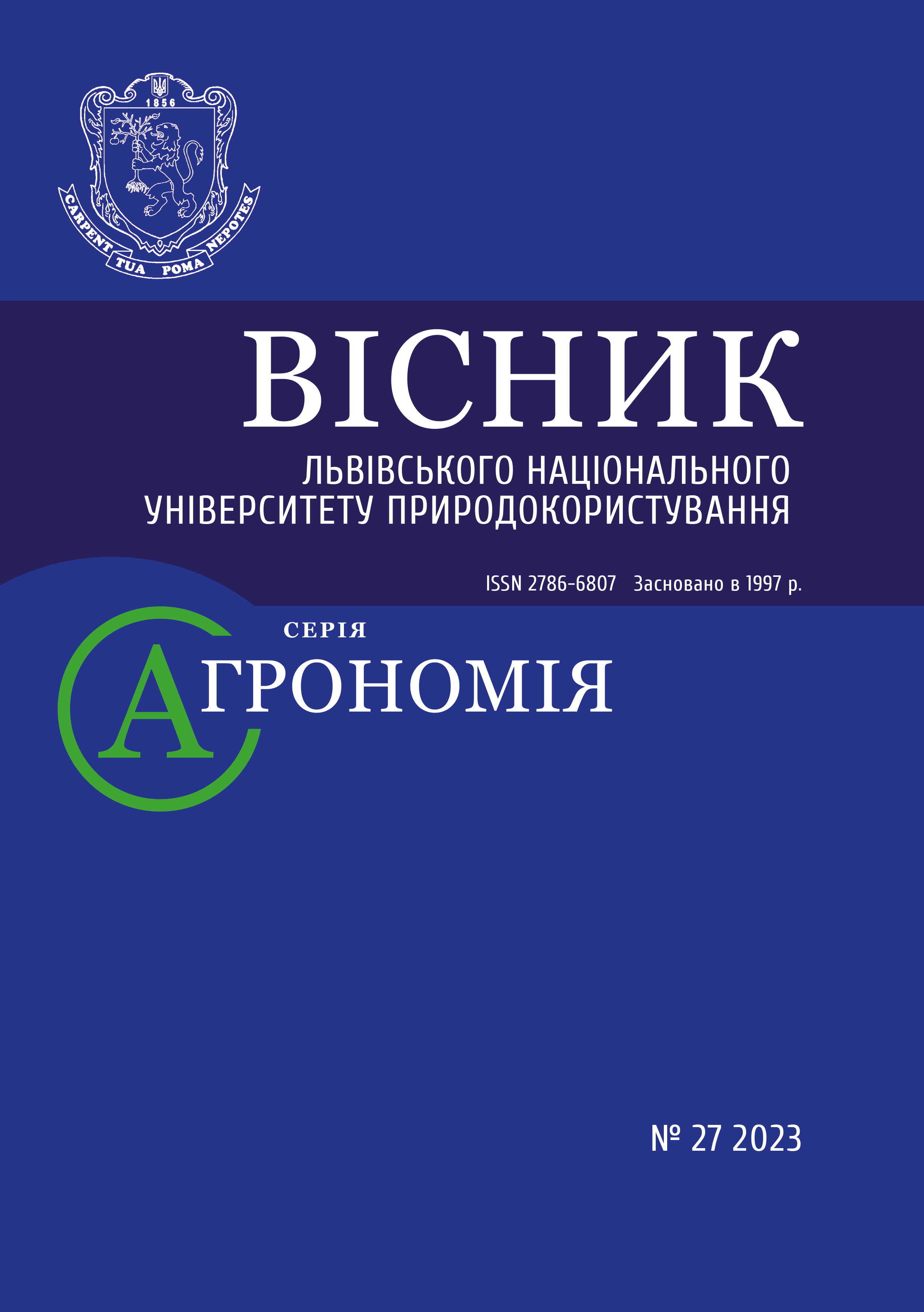STUDY OF THE SPECIES COMPOSITION OF ANNUAL FLOWERING AND ORNAMENTAL PLANTS IN CONDITIONS OF THE WESTERN FOREST STEPPE OF UKRAINE
DOI:
https://doi.org/10.31734/agronomy2023.27.114Keywords:
annual flowering plants, class, family, genus, species, fungal diseasesAbstract
The article presents the results of a study conducted on the species of annual flowering and ornamental plants in the flower compositions of the Western Forest Steppe of Ukraine. The study aimed to determine the resistance of these plants to diseases. The study focused on flowering and decorative plants that are grown as annuals in the Western Forest Steppe of Ukraine. The range of flowering and ornamental plants is classified into two classes: Monocotylidones and Dicotilydones. Class Monocotilydones is represented by: 2 – families; 6 – genera; 9 – spcies. Class Dicotilydones is represented by: 23 families; 47 – genera; 49 – by species.
The most numerous family from the class Dicotilydones is Asteraceae, which is represented by: 22 species from 20 genera. The most widely represented genera are: Portulaca L. (Portulac); Pharbitis Choisy L. (Ipomoea); Tagetes L. (marigolds); Dahlia Cav. (Georgina); Zinnia L. (Zinnia, Majory) which have several garden forms by the number of decorative garden forms. The range of flower and decorative plants used for arranging flower gardens in conditions of the Western Forest Steppe of Ukraine is represented by 4 ecological groups: mesophytes, xerophytes, heliophytes, sciophytes.
Annual flowering and decorative plants tend to lose their appeal due to damage caused by phytopathogenic microorganisms of fungal, bacterial, and viral origin. Throughout the growing season, these plants are susceptible to various diseases, including black leg, gray rot, powdery mildew, fusarium wilt, septoriosis, cercosporosis, alternariosis, as well as spotting of petals and leaves. The decorative forms of species from the genera Antirrhinum L., Collistephuys Cass, Tagetes L., and Zinnia L. were most often hurt.
The phytopathogenic complex of annual flowering ornamental plants is represented by fungi from the genera: Peronospora, Phytophthora, Cercospora, Septoria, Fusarium, Botrytis, Phyllosticta, Erysiphe, Rhizoctonia, Alternaria.
References
Alekseieva N. M. Asters. Flowers of Ukraine. 2001. 96 p. [in Ukrainian].
Angiosperm Phylogeny Group. An update of the Angiosperm Phylogeny Group classification for the orders and families of flowering plants: APG IV. Botanical Journal of the Linnean Society. 2016. Vol. 18. P. 1–20. DOI:10.1111/boj.12385. [in English].
Bessonova V. P. Flowering plants: a guide. Dnipropetrovsk: Svidler A. L., 2010. 176 p. [in Ukrainian].
Bosa N. I. Dahlias. Flowers of Ukraine. 2004. 24 p. [in Ukrainian].
Chumak P. Ya. A flower garden without pests and diseases. Flowers of Ukraine. 2000. 64 p. [in Ukrainian].
Demchenko M. Petunia Flowers of Ukraine. 2002. No 5 (57). P. 8–19. [in Ukrainian].
Horlenko S. V. Determinant of diseases of flower and decorative plants. Kyiv: Harvest, 1969. 160 p. [in Ukrainian].
Klymenko A. V. Little-known decorative annuals in landscaping. Flowers of Ukraine. 2004. No 1 (77). P. 8–10. [in Ukrainian].
Kobiv Yu. Dictionary of Ukrainian scientific and popular names of vascular plants. Kyiv: Naukova dumka, 2004. 800 p. [in Ukrainian].
Kucheriavyi V. P. Ecology. Lviv: World, 2001. 499 p. [in Ukrainian].
Kurt Gunther Urania Tierreich Insekten. Berlin, 1978. 631 s. [in German].
Marchenko A., Havryliuk V. Species composition of annual flowering ornamental plants in the structure of flower compositions and their phytopathological condition. Bulletin of Lviv National Agrarian University: agronomy. 2013. No 17 (2). P. 162–169. [in Ukrainian].
Matiienko L. O. Annual plants. Flowers of Ukraine. Kyiv. March. 2000. 42 p. [in Ukrainian].
Pydoplychko N. M. Fungi-parasites of cultivated plants. Kyiv: Scientific opinion, 1977. 295 p. [in Ukrainian].
Roshchupkin S. Selection of peonies. Flowers of Ukraine. 2021. No 6 (183). P. 2–17. [in Ukrainian].
Vovk S. O. Peculiarities of using flower species in planning and creating landscape compositions. Aquatic and terrestrial ecosystems and their biodiversity: a collection of scientific works. Zhytomyr: Polissia National University, 2023. P. 14–17. [in Ukrainian].


